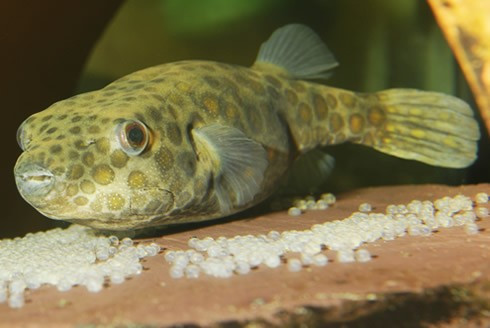Origin of the Unusual Beaks of Pufferfishes Discovered

The origin of the unusual beak of pufferfishes has been discovered, giving new clues about how such unique structures can evolve, a new report mentions.
The discovery was made by a team of scientists led by Gareth Fraser of the University of Sheffield. Apart from this, Natural History Museum scientists Ralf Britz, Zerina Johanson and Andie Hall, and Moya Smith of London's King's College were also involved in the study published in the journal Proceedings of the National Academy of Sciences (PNAS).
Pufferfishes belong to a group that includes the triggerfishes, boxfishes and ocean sunfishes. They have some of the most unusual teeth you're ever likely to see underwater.
Perhaps the most bizarre, however, is the "beak" of pufferfishes. It's made of beak-shaped toothplates and it uses them to crush and slice prey. However, till date, scientists had no clear idea about exactly how it is formed.
The team investigated how the teeth develop and the genes responsible. They studied pufferfish young, or larvae, which begin life with normal conical teeth, taking hundreds of snapshots of the fishes developing. They identified the different stages of tooth development, staining tooth structures red so that they could easily see the changes.
They found that the beak is formed by a strange modification of just the 4 front teeth. In the first stage, the individual teeth grew at exactly the same time and in the same positions as in other bony fishes. These are called the first generation teeth and they disappear through wear.
In the study, the researchers mentioned that this developmental pattern has been conserved for over 400 million years, since the last common ancestor of the pufferfish and other fish like lungfish. Stages of tooth development (stained red) showing the change from teeth, to bands, to "beak".
Stages of tooth development (stained red) showing the change from teeth, to bands, to the beginnings of a pufferfish 'beak'.
The next stage involves the four teeth at the front. Replacement teeth develop underneath that have a very different shape, forming bands that extend along the length of the jaw. The first band develops when the larva is around 5mm long. More bands form underneath and make a stack that eventually replaces the first generation teeth once they are worn away. This becomes the beak structure.
© Copyright IBTimes 2025. All rights reserved.



















